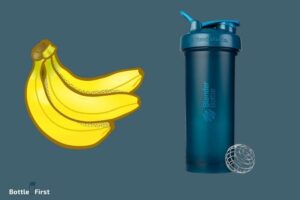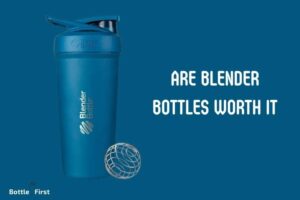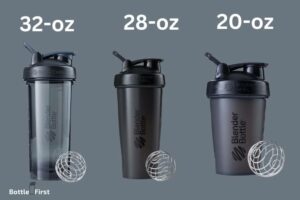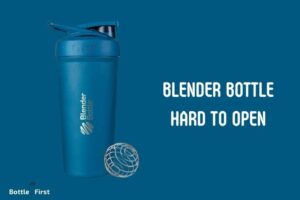Blender Bottle Leaks When Shaking – Expert Tips!
Most leaks in blender bottles during shaking are attributed to incorrect assembly or lack of proper maintenance.
To achieve a leak-proof shake, ensure that your blender bottle is correctly assembled and well-maintained.
The primary reason blender bottles leak is due to the improper fitting of the lid or the sealing gasket.
Here are common causes and solutions:
- Incorrect Lid Placement: Make sure the lid is screwed on evenly and tightly.
- Worn Seals: Inspect the seal for wear and tear and replace it if necessary.
- Overfilling: Leave some space to allow for the expansion of liquids.
If a seal is visibly cracked or the threads on the lid are worn, this can cause leaks during shaking.
For a smooth blending experience, regularly check your blender bottle for wear and assemble it correctly to avoid spills. Leaks often result from improper assembly or neglecting bottle maintenance.
This guide explores common causes of leaks, provides tips for proper assembly, and helps you choose the right bottle.
Follow these steps for a hassle-free blending experience and maximize your satisfaction with this essential kitchen tool.
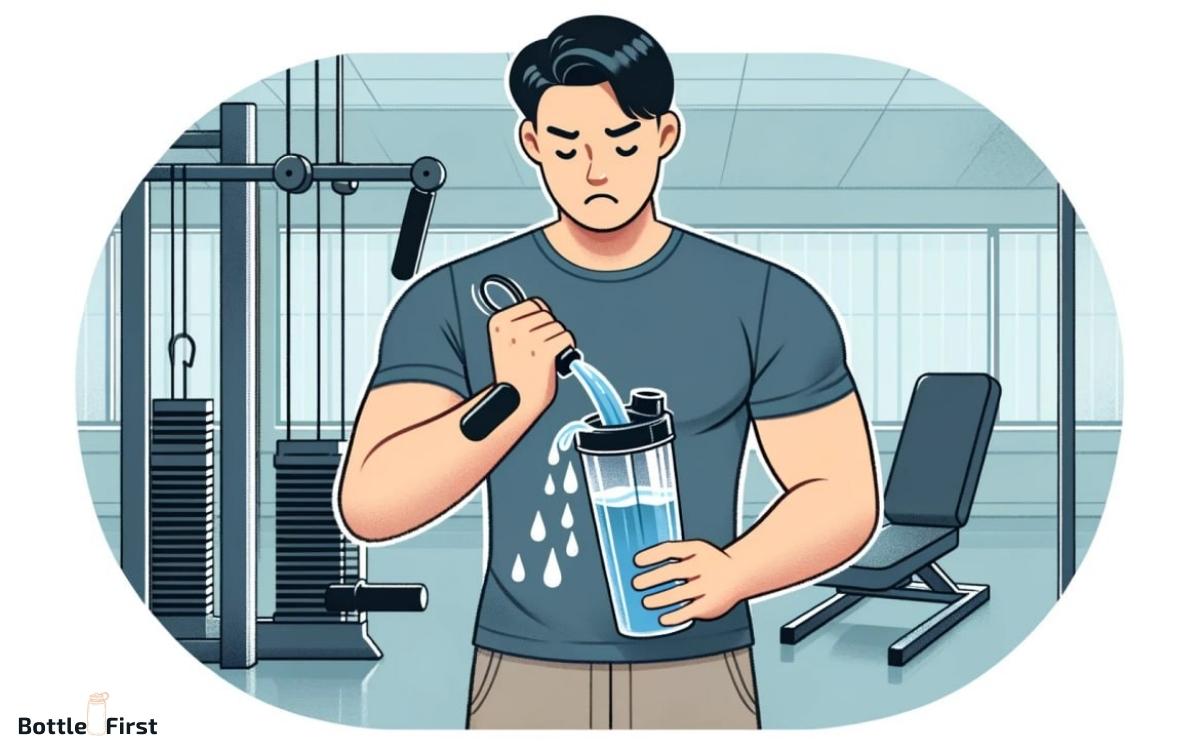
Key Takeaway
Common Causes of Blender Bottle Leaks
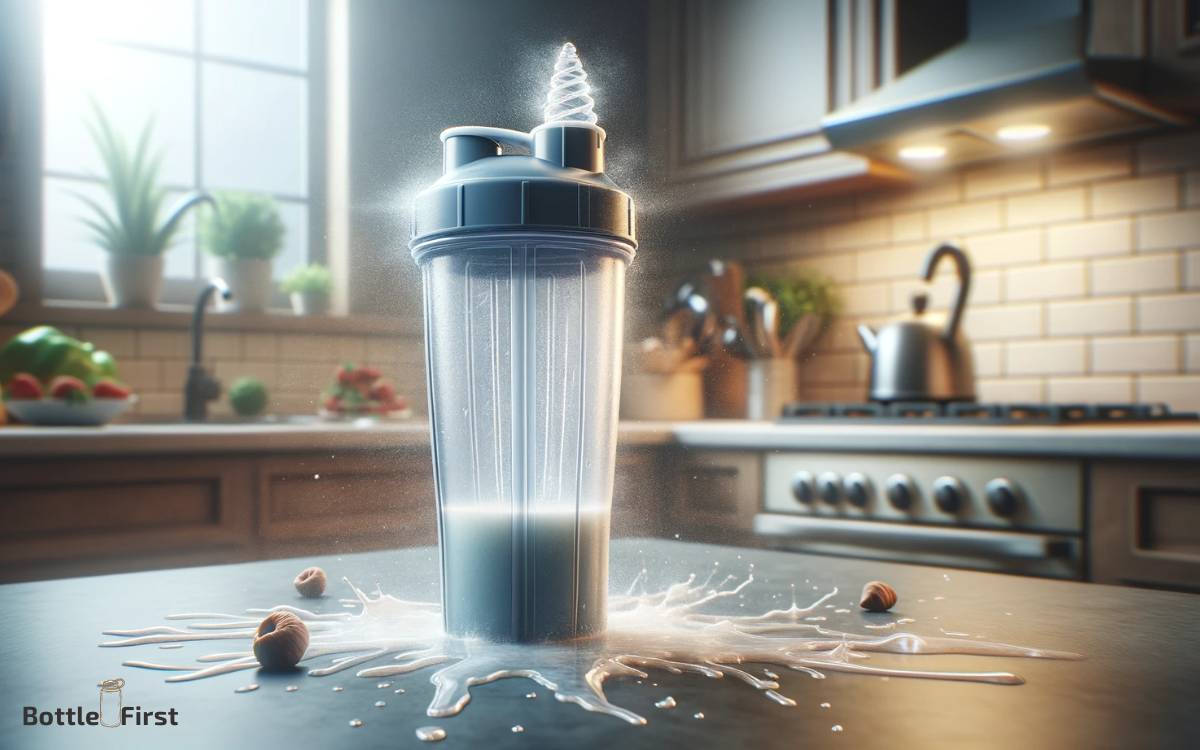
Frequently, blender bottle leaks occur due to improper sealing of the lid or wear and tear on the silicone gasket.
When the lid is not securely tightened, liquids can escape during the shaking process. Additionally, over time, the silicone gasket can degrade, leading to a compromised seal and potential leaks.
To address these issues, innovative design enhancements have been introduced in modern blender bottle models. These include improved lid mechanisms that provide a more secure seal, as well as durable, long-lasting silicone gaskets.
By integrating these advancements, manufacturers aim to minimize the occurrence of leaks, offering users a more reliable and hassle-free blending experience.
Understanding these common causes of blender bottle leaks can guide consumers in selecting products with enhanced features, ensuring a tighter seal and preventing messy leaks during use.
Proper Assembly of Blender Bottle Components
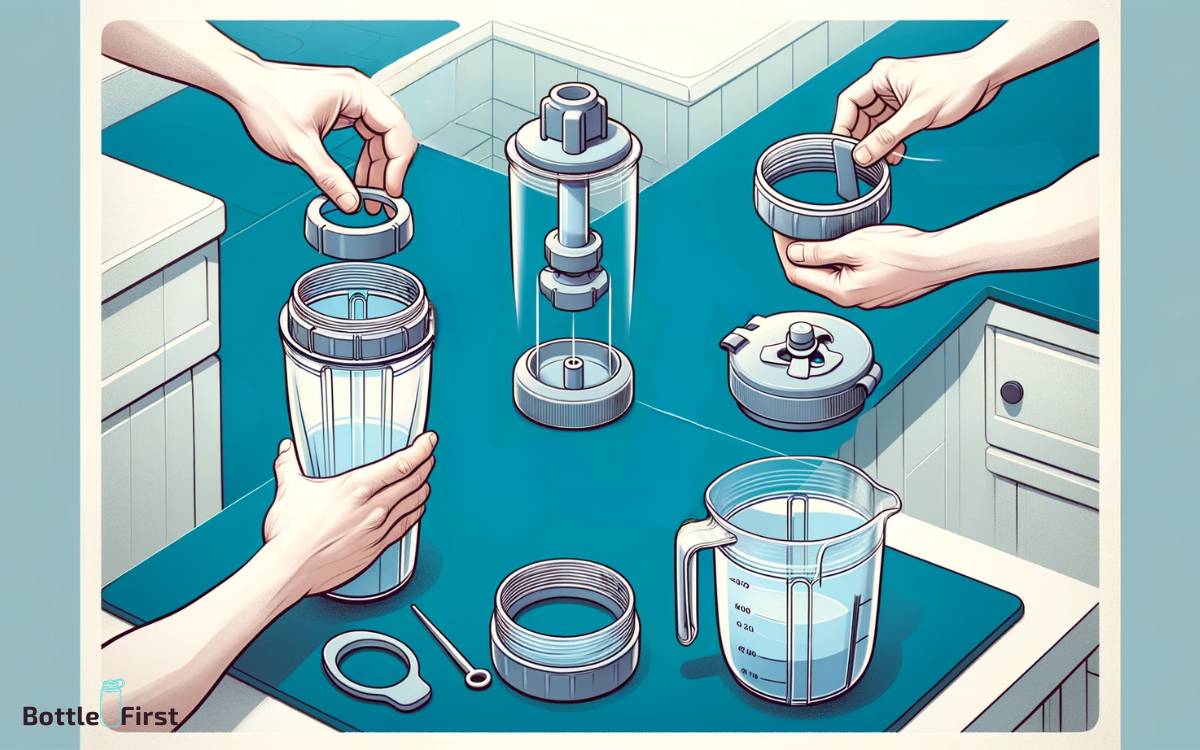
To prevent blender bottle leaks when shaking, proper assembly of the bottle components is essential for ensuring a secure and leak-free seal.
Start by ensuring that the blender ball is properly inserted into the bottle before adding any ingredients.
Next, make sure that the lid is securely twisted onto the bottle, with the flip cap closed tightly. It’s important to check that the rubber gasket inside the lid is in place and free from any damage.
Additionally, inspect the threads on both the bottle and the lid for any signs of wear or damage that could compromise the seal.
Following these assembly steps meticulously will help maintain the integrity of the blender bottle and prevent leaks during shaking.
Now, let’s move on to the next section about choosing the right blender bottle.
Choosing the Right Blender Bottle
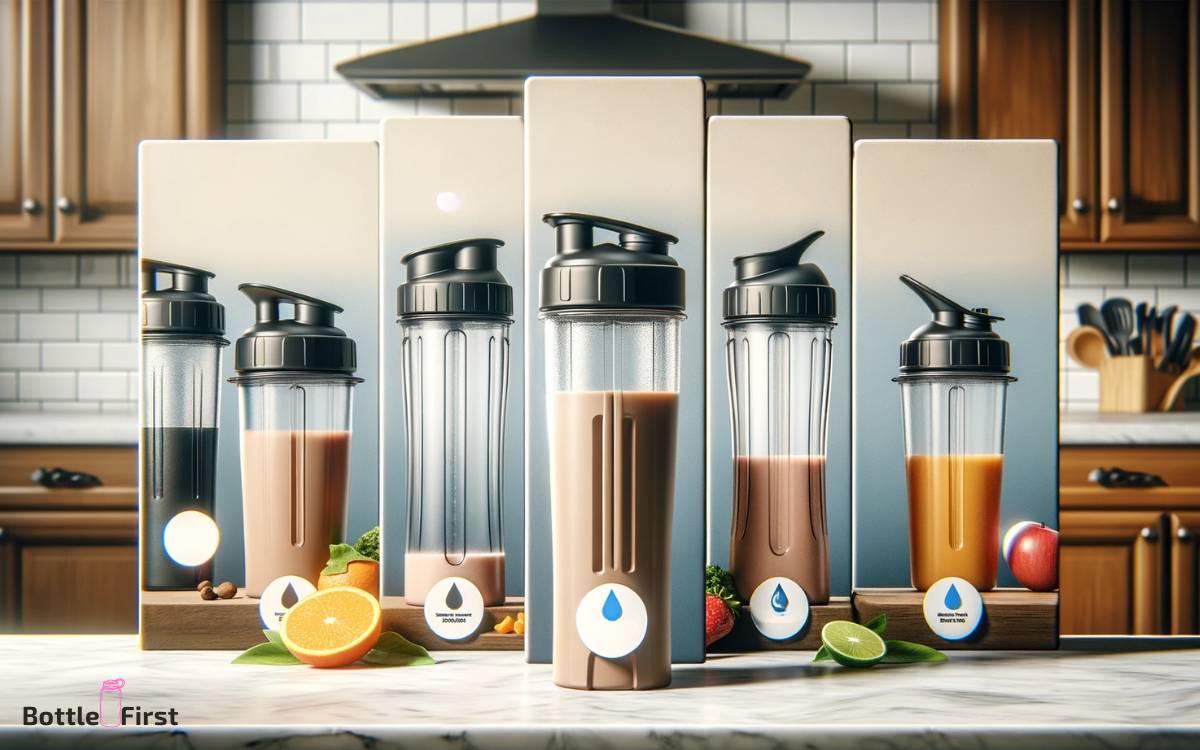
An essential consideration when selecting a blender bottle is to ensure that it meets the specific requirements of your intended use.
For those seeking innovation in their blending experience, it is crucial to look for features such as leak-proof seals, durable materials, and convenient designs.
Look for bottles with secure screw-on lids and flip cap closures to prevent leaks during vigorous shaking. Additionally, consider the size and shape of the bottle to ensure it fits comfortably in your hand and is suitable for carrying on the go.
Innovative designs may also include features like storage compartments for powders or supplements, mixing ball technology for smoother blends, and insulated options for maintaining beverage temperature.
Techniques for Effective Shaking
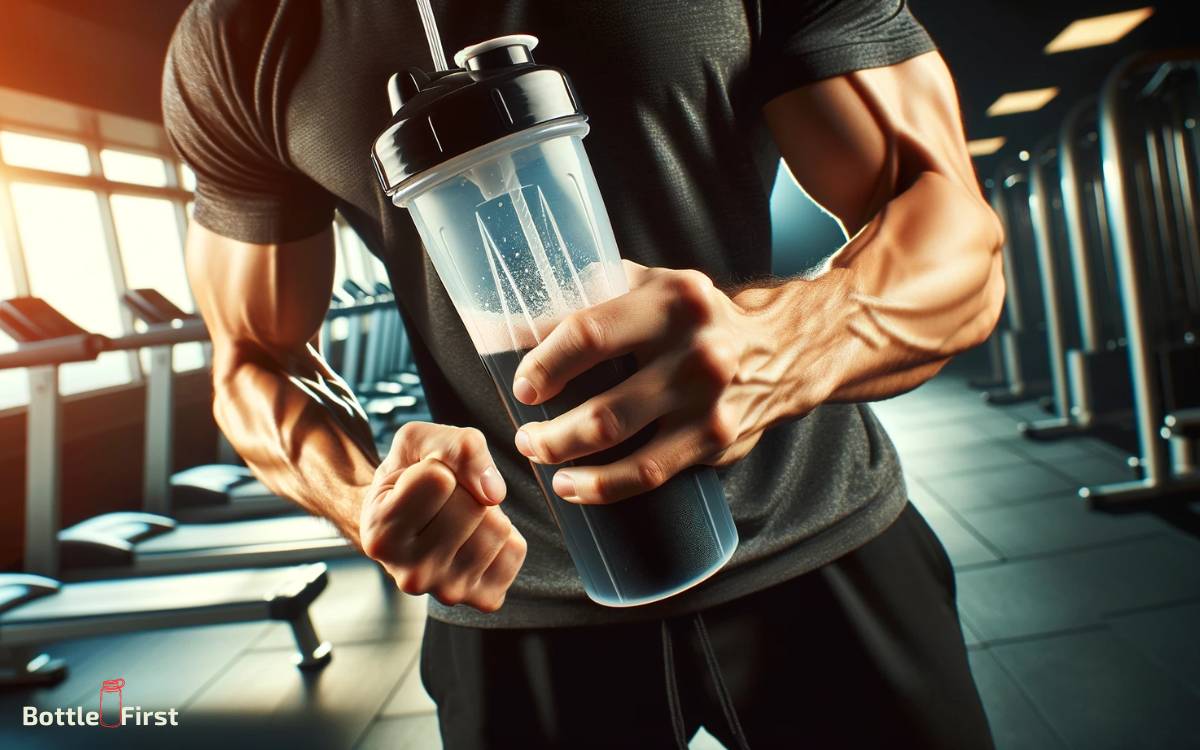
Effective shaking of a blender bottle requires a vigorous and consistent back-and-forth motion to ensure thorough mixing of the contents.
To maximize the effectiveness of the shaking process, consider incorporating various techniques to achieve better results.
Utilizing quick, forceful shakes with brief pauses in between can help prevent clumping and ensure a smoother blend.
Additionally, incorporating circular or figure-eight motions during shaking can aid in reaching all areas of the bottle, promoting a more comprehensive mixing process.
Experimenting with different shaking techniques, such as varying the speed and angle of the shaking motion, can also contribute to a more uniform and efficient blend.
By innovatively exploring diverse shaking methods, individuals can optimize the performance of their blender bottles and achieve consistently well-mixed contents.
Maintenance and Care for Leak Prevention
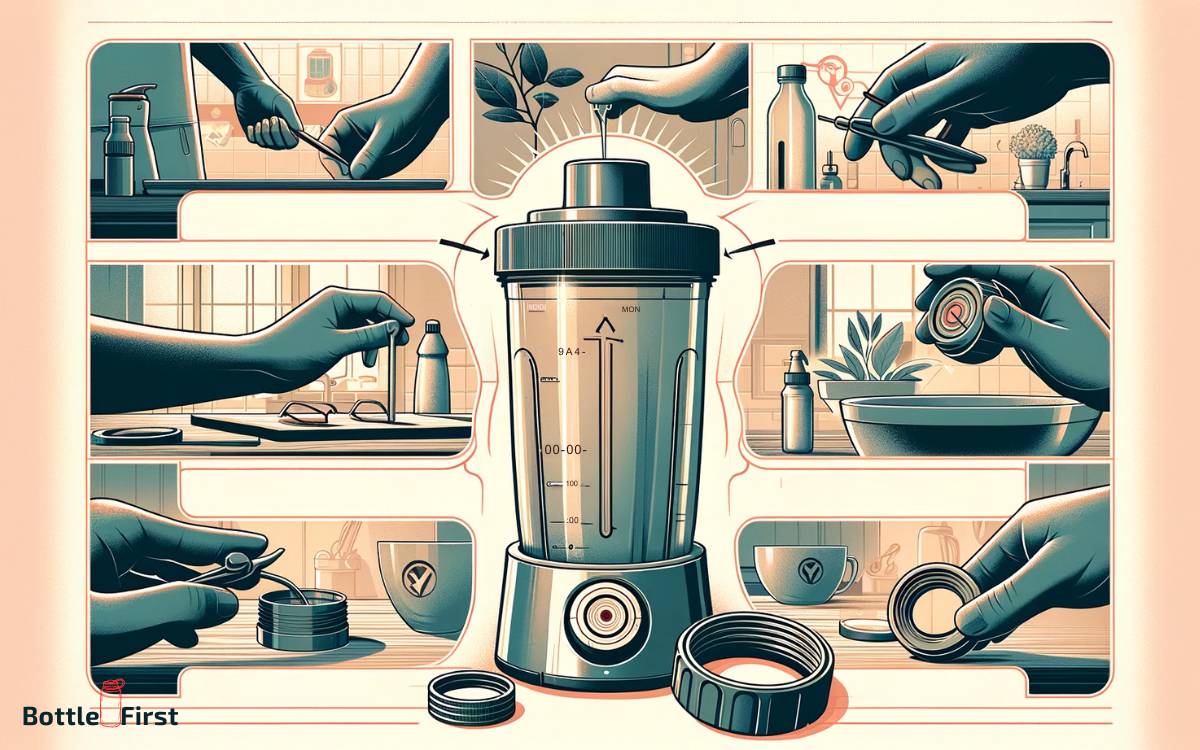
Proper maintenance and care are essential for preventing leaks in blender bottles.
To ensure leak prevention and prolong the life of your blender bottle, consider the following:
- Regular Cleaning: Thoroughly clean the bottle, including the lid, after each use to prevent residue buildup that can compromise the seal.
- Inspect Seals and Gaskets: Regularly check the seals and gaskets for any signs of wear and tear, and replace them as needed to maintain a secure, leak-proof seal.
- Avoid over-tightening: While it’s important to securely tighten the lid, over-tightening can cause stress on the seals and lead to leaks. Find the balance between snug and overly tight to prevent leaks without damaging the components.
Conclusion
In conclusion, understanding the common causes of blender bottle leaks and ensuring proper assembly, choosing the right blender bottle, using effective shaking techniques, and regular maintenance can help prevent leaks.
By addressing these factors, individuals can enjoy a leak-free experience and extend the lifespan of their blender bottle.
It is crucial to be mindful of these considerations to avoid the inconvenience of leaks and maintain the functionality of the blender bottle.


